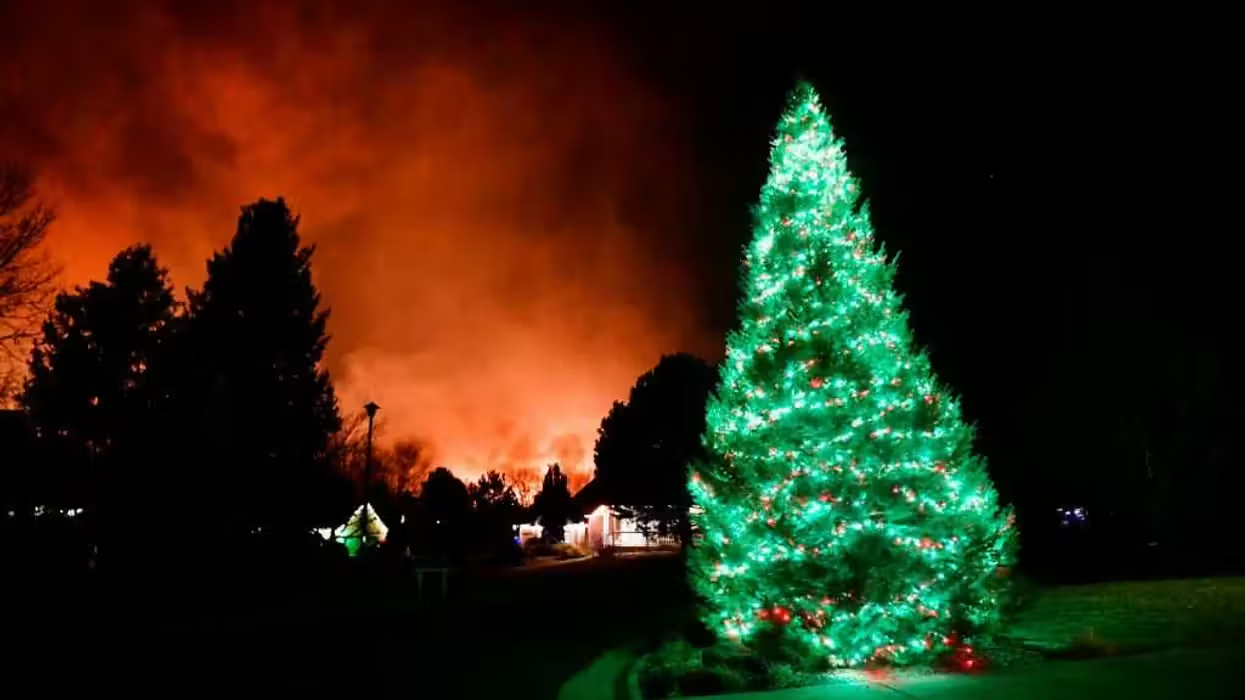© 2025 Blaze Media LLC. All rights reserved.
Is the NYPD out of control? Or did a selectively analyzed video create a false narrative?
On the afternoon of July 17, 2014 at 4:45 p.m., New York City police approached a 43-year-old man named Eric Garner.
Police claim they observed Garner, who had previous arrests for dealing in untaxed cigarettes, sitting in front of a beauty supply store at 202 Bay Street in the Staten Island borough, selling loose cigarettes to random individuals.
Plainclothes officers engaged Garner in conversation about his activities and their observations. At that point, as can be seen in the now viral video of the incident, Garner became aggitated and began arguing with police. Saying, among other things, "Who did I sell cigarettes to?" and "Every time you see me you arrest me."
Police then attempted to place Garner under arrest, but the much larger Garner began to resist. He pushed the officers away, telling them "do not touch me."
At 6 feet 3 inches tall, and weighing 350 pounds, Garner was a formidable opponent. Other officers in the vicinity rushed to assist in the arrest. Police Officer Daniel Pantaleo attempted to wrestle Garner to the ground.
Pantaleo can be seen in the video grabbing Garner around the upper body and under his right arm. As Garner was much taller and broader than Pantaleo, the officer was unable to get suitable grip. A struggle ensued with other officers jumping in, and in the process Garner fell to the ground.
During the struggle, the video appears to show Pantaleo's arm briefly around Garner's neck. However, as soon as Garner was on the ground, Pantaleo removed his grip within seconds, and other uniformed officers placed Garner in handcuffs.
Garner can be heard speaking, saying "I can't breathe" over and over.
A short time later, Eric Garner died.
The death of Garner has been the subject of fiery debate, allegations of racism and police brutality, and now the New York police officers involved have been suspended, possibly facing a grand jury and criminal charges.
Four EMTs have also been suspended in the wake of the incident.
Those indicting the police claim that the barred chokehold killed Garner, and that the police are nothing short of murderers.
But was it police brutality?
Did Pantaleo even use a chokehold?
Many are relying on, but misreading, the findings of the New York City Office of Chief Medical Examiner.
That office ruled Garner's death a homicide. The chokehold however was not the cause of death.
According to medical examiner spokeswoman Julie Bolcer, Garner was killed by "...the compression of his chest and prone positioning during physical restraint by police... Asthma, heart disease and obesity were contributing factors..."
The Reverend Al Sharpton couldn't be happier, and of course took all of this as a victory. Calling for a federal prosecution of the officers, and prepping the Garner family for what is sure to be a long public relations campaign and civil litigation, he even brought the mayor's family into the debate.
Sharpton, using his stock-and-trade race baiting, said to the mayor, “If Dante wasn’t your son, he would be a candidate for a chokehold," referring to Mayor Bill De Blasio's mixed race son.
A tasteless low blow, even for Sharpton.
But De Blasio appears to have prematurely, albeit softly, thrown the NYPD under the bus saying, "As an individual who's not an expert in law enforcement, it looked like a chokehold to me. But I also emphasize you have a full investigation because all sides need to be heard and all evidence has to be looked at..."
Despite the mayor's statement, the biggest questions in this case still exist. Was a chokehold used, and did it kill Garner?
No Damage To Garner's Throat
Buried in the avalanche of news on this case are the early autopsy findings from the medical examiner, which indicate that there was no damage to Garner's throat.
Yet, the media is only focusing on the subsequent report ruling the death a homicide. They have completely ignored this earlier report, choosing instead to run with the "chokehold" narrative.
NYPD Patrolmen's Benevolent Association President Pat Lynch said of the corner's report, "I've never seen a document that was more political."
In fact, there is only supposition that if a chokehold had been used, it might have contributed to a lack of oxygenation brought on by Garner's health issues caused by his pre-existing asthma, heart disease, and obesity.
In short, even if Pantaleo's arm was around Garner's throat for a brief time during the scuffle, it is not what killed him.
People need to understand that arrests are often volatile, dynamic things. They are not static and are certainly not textbook.
Whether or not Pantaleo even used a barred chokehold will be the subject of multiple investigations for months to come, but I wanted to give my opinion as a former police officer.
No.
In watching the video, I do not consider what Pantaleo did to be a chokehold as defined and disallowed by the NYPD Patrol Guide.
The Patrol Guide is essentially the NYPD's Bible. It contains every rule, do and don't for who the NYPD calls Members of the Service.
The Patrol Guide reads:
A chokehold shall include, but is not limited to, any pressure to the throat or windpipe, which may prevent or hinder breathing or reduce intake of air.
Even the Mayo Clinic lists the first symptom of choking as inability to talk. Garner's ability to clearly speak while on the ground, combined with the early autopsy findings of no damage to his throat, convince me that Pantaleo's hold did not choke Garner.
The evidence suggests to me that Garner's poor health, exacerbated by the stress of the altercation, caused his death. Not Pantaleo's take down.
Having viewed the video time and again, it does not appear that Pantaleo was constricting Garner's airway. It appears he was trying to use upper body leverage to bring the much larger Garner down.
That is a significantly different tactic than a chokehold. One involves using the chin and head as leverage with no direct pressure to the neck, while the other involves cutting off the air supply. They would however look identical on video.
Add to that Pantaleo releasing his hold seconds after Garner was in the prone position, and I saw no malice or intent to cause harm to Garner in that video.
As for the video, most notably the videographer, the objectivity comes into even more question now that the person who shot it has been arrested and is pending prosecution for giving an illegal handgun to a teenager.
Nor does it show Garner's actions prior to his conversation with the police.
Now, I am not in any way diminishing the death of a human being. Especially one placed under arrest for a relatively minor offense.
This is most definitely a tragedy for Garner's family.
The NYPD has millions of successful interactions with the public annually. There will be those rare times, like this one, where a perfectly tragic series of events leads to someone's death.
Society has a very hard time reconciling that a death can occur during an altercation, but no one is at fault. That very much appears to be the case here.
By all means, conduct an investigation; but conduct a fair and impartial one, without political agendas guiding the outcome.
Yes, our police take an oath to defend the Constitution and Bill of Rights. When they violate that, they should be punished severely.
However, they are also Americans, and also enjoy those same protections when they are accused.
Let's not allow Sharpton and his ilk to determine the outcome of this case. Let justice prevail, no matter where that leads.
Follow me on Twitter @johncardillo
–
TheBlaze contributor channel supports an open discourse on a range of views. The opinions expressed in this channel are solely those of each individual author.
Want to leave a tip?
We answer to you. Help keep our content free of advertisers and big tech censorship by leaving a tip today.
Want to join the conversation?
Already a subscriber?
more stories
Sign up for the Blaze newsletter
By signing up, you agree to our Privacy Policy and Terms of Use, and agree to receive content that may sometimes include advertisements. You may opt out at any time.
Related Content
© 2025 Blaze Media LLC. All rights reserved.
Get the stories that matter most delivered directly to your inbox.
By signing up, you agree to our Privacy Policy and Terms of Use, and agree to receive content that may sometimes include advertisements. You may opt out at any time.






